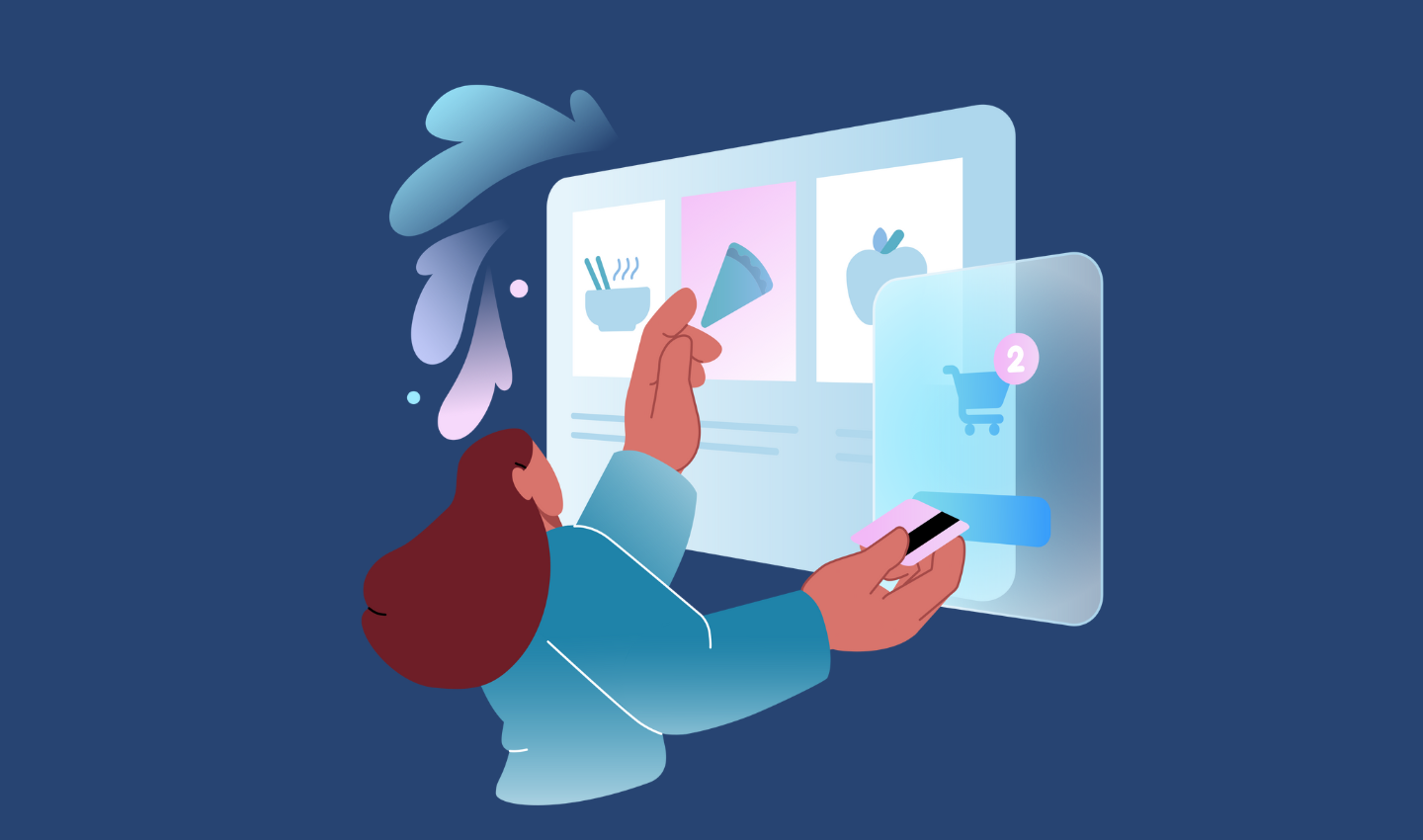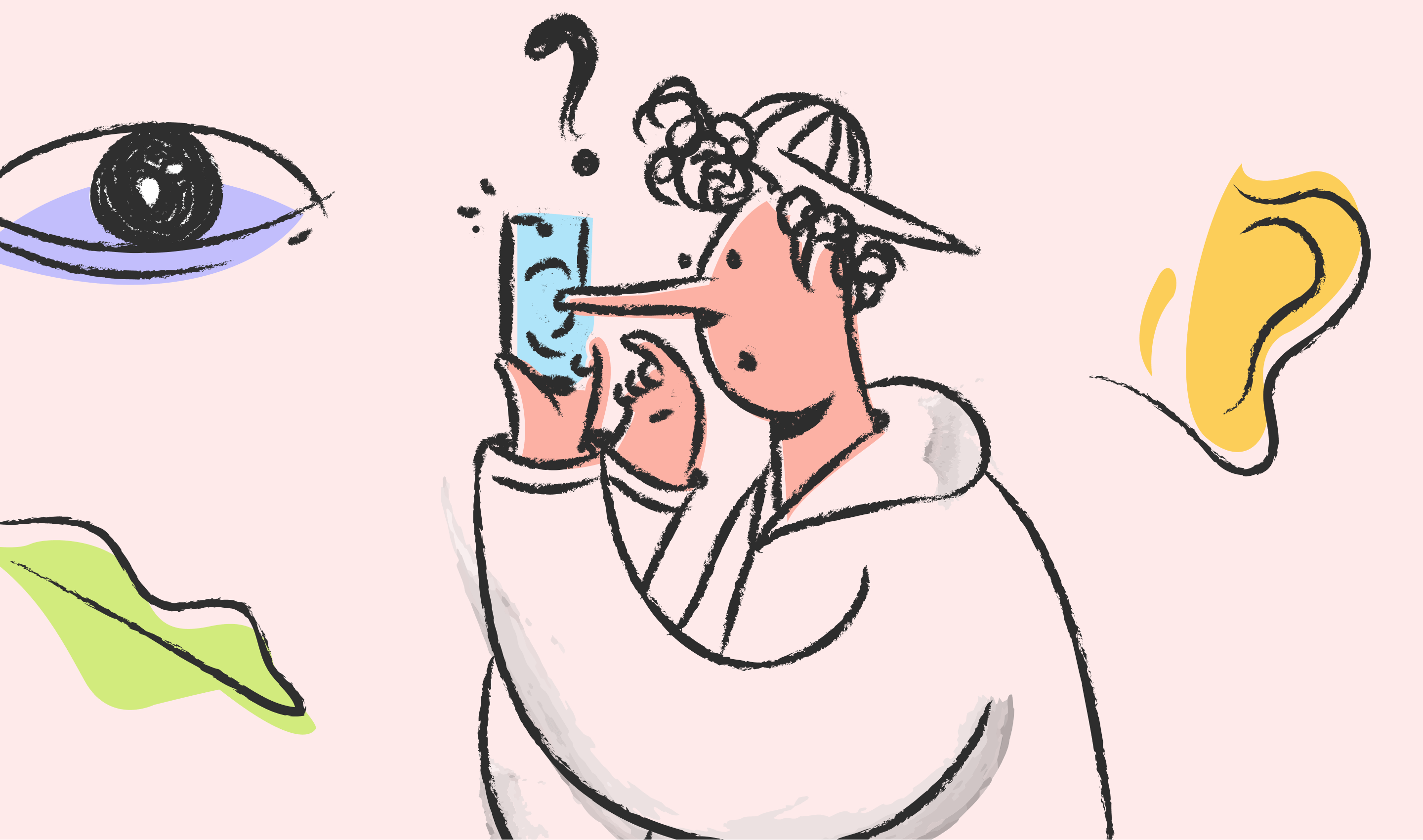
Airbnb’s Feature Release: What can we learn from it?
Airbnb consumer behaviour has shifted and inspired product changes, with their most recent feature release being the talk of the town. CEO Brian Chesky is even calling it “the biggest change in a decade.”
The three big changes made this month are:
- Airbnb Categories – 56 categories provide users with a new way to search for getaways.
- Split Stays – Allowing users to split their stay between two homes for that longer trip
- AirCover – Free, comprehensive travel protection
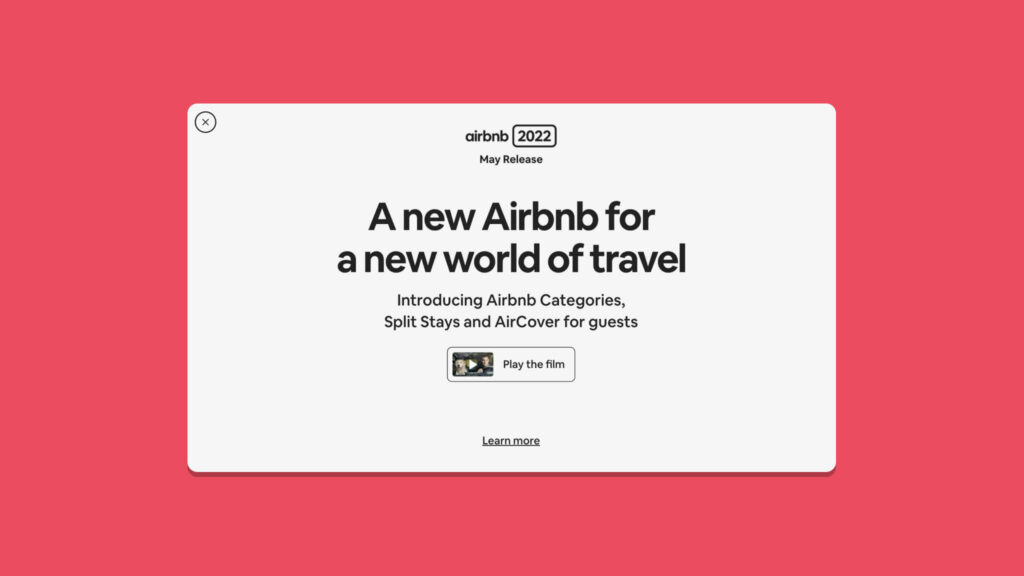
These updates are all working toward some big goals for the company:
- Encouraging and inspiring the world to get back out there – we’ve been bunkered down for the past two years and the travel bug is running rife in 2022. Airbnb has recognised this and is making changes to its product to facilitate this yearning to get back to travelling.
- Maintain a healthy, profitable business – as Airbnb truly relies on the business of their hosts, they want to give them the best visibility possible, in turn benefiting both the host and the business.
By rethinking its search function, pairing listings together for longer-term travel and protecting its somewhat nervous users under Aircover, Airbnb is embracing post-pandemic ambiguity and anxieties, facilitating a safe way for its users to get back out there.
In this article, we’ll delve further into Airbnb’s 56 Categories and Split Stays and why they are the result of their user’s changed travel patterns.
Table of Contents
🦠 A Pandemic Airbnb
Going into 2020, Airbnb was aggressively expanding. That was until COVID-19 ravaged all that we knew as ‘normal.’
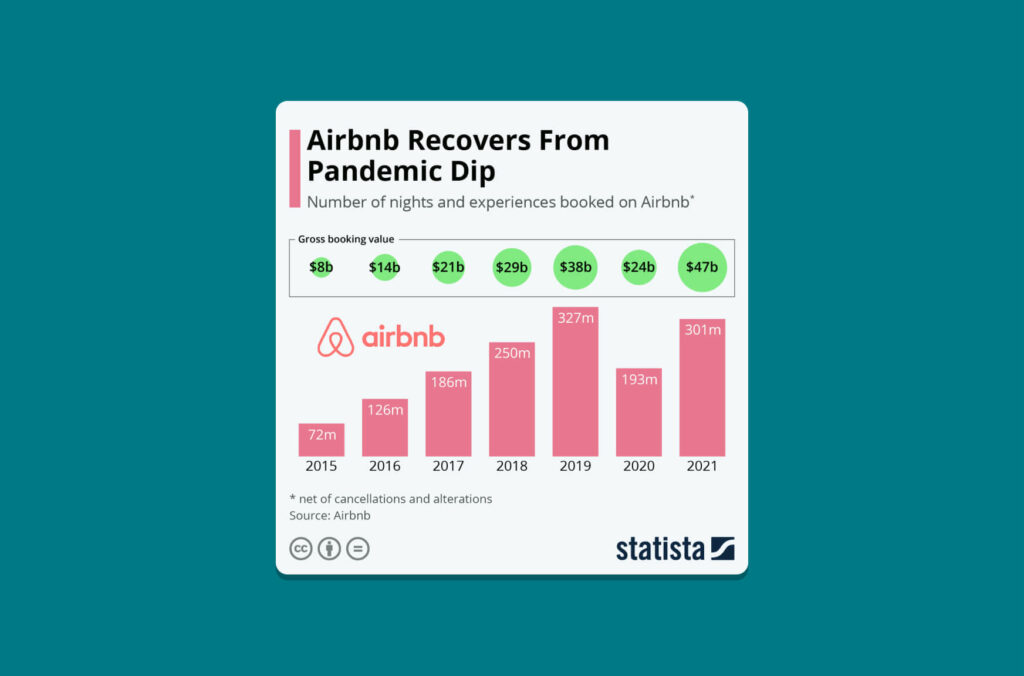
From March to April 2020, there were more cancellations than bookings. While planes stayed on the tarmac and streets became eerily empty, revenue tumbled 72% year over year and quarterly losses ballooned to $576 million.
Chesky and the leaders at Airbnb directed their efforts on the core business, customer emotions, and employee needs.
They realised a few things:
😅 Travel and physical connection were on pause for quite some time. Now that they are up and running again some people don’t even know where to start.
🏡 A search for longer-term housing is more common as work becomes more flexible.
😬 Customers would be reluctant to make new reservations given the uncertainty of travel restrictions and potential pandemic surges.
“People are getting vaccinated, travel restrictions are lifting, people want to connect,” Brian Chesky, Airbnb CEO, “Travel is coming back … But it will be really different than before.”
So, they brought out a couple of features to cater to this.
👀 56 Categories
Since the start of the pandemic, Airbnb has been focused on flexibility for guests. However, the way we traditionally search for holiday destinations is quite rigid.
We’ll usually:
- Enter in our destination
- Enter in our date range
- A list of available accommodation that suits our criteria will appear
But once we get to step three, our options are severely limited by steps one and two. This is of course ideal for those who have location and date restraints, but for those just browsing, a lot of amazing places (and eagerly awaiting hosts) will be filtered out.
Airbnb has hosts in hundreds of thousands of cities across the globe and a flexible search allows for these locations to be discovered.

But, this flexibility was only the beginning of this unorthodox way of searching. In Airbnb’s May 2022 Design Video, Chesky states the following:
For 25 years, the way you search for travel online has been the same. There’s a big box. It’s a search box and it asks you a question: Where are you going? And so the first problem is you have to actually think of a place to go. We could show you places that you would never have thought to search for. So that’s why we’ve created a whole new design built around Airbnb Categories.
Brian Chesky

And here it is, a neat array of crisp, clean icons at the top of the page just under the flexible search bar. Upon browsing, you’re presented with 56 categories that organise homes based on their style, location, or proximity to a travel activity. When searching for a destination, your search results are also organised by any category you select.
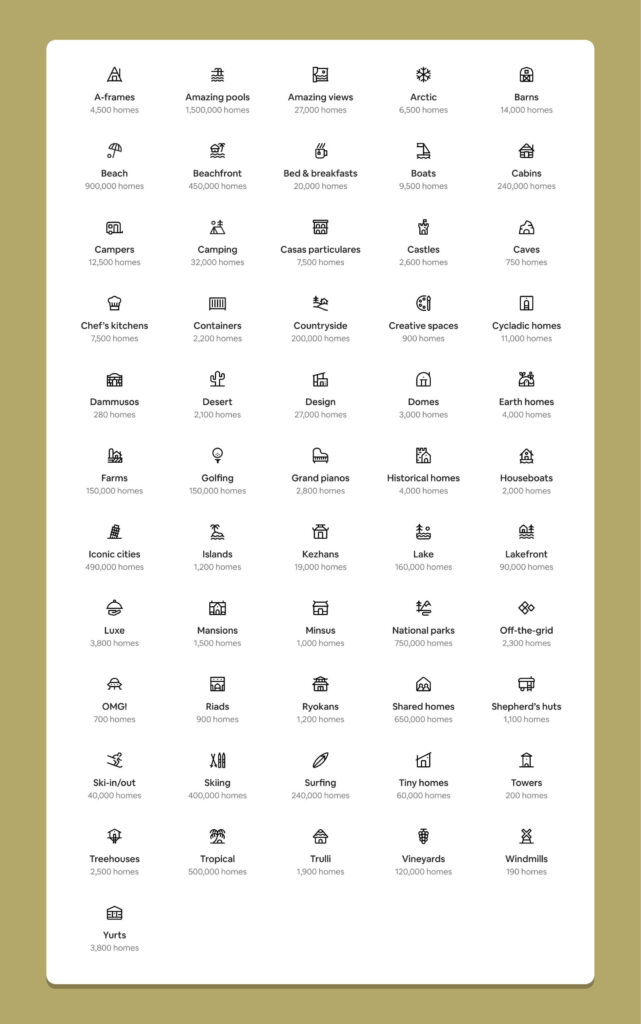
As to how they create these categories, Airbnb mentioned the following:
👩💻 They pull data from the six million stays that use their product.
🤔 Then, they evaluate listings using machine learning to analyse titles, written descriptions, guest reviews, photo captions and other data.
⛏ Airbnb’s curation team reviews listings and hand-picks featured photos.
The Airbnb categories include more than 4 million homes organised by what makes them special, helping eager travellers discover places they may not have found otherwise. Whether users are looking to stay in a lakefront cottage in Italy, Frank Lloyd Wright’s Schwartz House, or a yellow submarine in New Zealand, there should be something within these 56 categories that hits the mark.
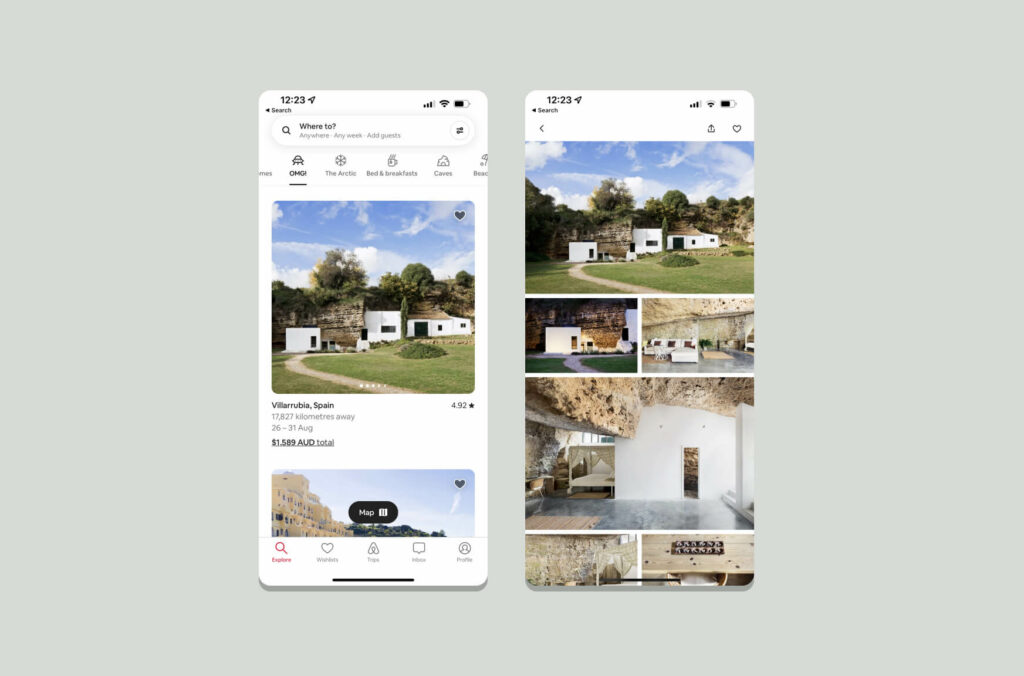
One of the most intriguing categories (and one I spent quite a lot of time scrolling in) is the OMG section, where the coolest and quirkiest stays are showcased.
For a very visual person who wants their stay to be a true ‘experience,’ I absolutely adore this feature for browsing, but I can also understand why they won’t be practical for absolutely everyone. There are plenty of other priorities for users – like price and availability – which have seemed to take a bit of a backseat in the filter section, despite still being very important in a lot of people’s decision making before booking a trip.
✌️ Split Stays
Airbnb noted that in the last three months, almost half of all nights booked on its platform were for trips lasting a week or longer. Data from the past year showed roughly one-fifth of nights booked were for stays exceeding a month, and about 100,000 users had booked stays lasting three months or longer.
Airbnb’s research uncovered that long-term stays are at an all-time high, more than doubling from two years ago. To cater to this, they have risen to the occasion by introducing split stays. Split stays provide you with a prompt to book two bookings over a set period of time. For example, if you want to stay for a month somewhere, Airbnb will provide you with a card that advertises two stays that span over that period of time, giving users more stay options. It also provides hosts with more exposure, because if split stays weren’t provided, they would have a limited array of options that can only cater to a full month’s accommodation.

When searching for a specific destination, split stays automatically appear in your search results. An animated line connects the two homes on the map to show the distance between them. Upon selecting the stays, you are then taken through a step by step booking to lock in each stay.
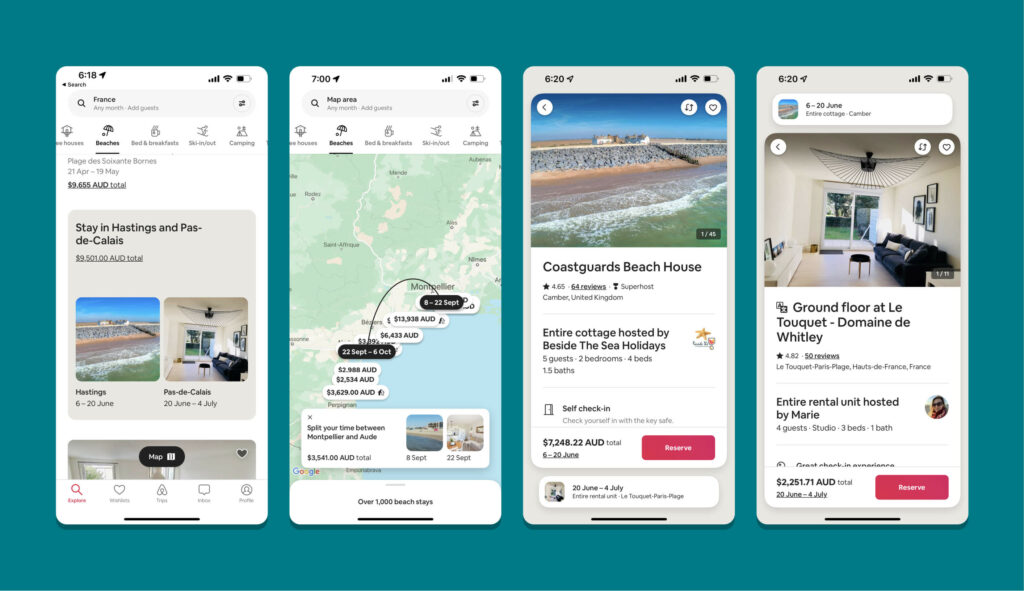
Despite only just being launched, Chesky sounds quite optimistic about this feature’s future potential too:
The moment we can intelligently pair two homes, we can eventually pair three homes or two homes and an experience or a home and an experience plus something else. Then, we can give a user control. You can then start to integrate it with wishlist down the road. It really starts to become a true itinerary building app, which we’re not getting right now. But the technology exists.
Chesky
Split stays seem to take the guesswork out of navigating different accommodation availability, particularly for those who plan to stay in a certain area for a longer period of time. I really like how Airbnb has tackled this problem for both hosts and holidayers as it is a great opportunity for hosts to be able to fill in any awkward, vacant gaps, and it provides the traveller with a chance to try out two different environments. It’ll be great to see the feedback on this after it has been out for a little while!
📃 Wrap Up
“Yes, travel is changing,” Chesky said. “But what people have always needed, those things will never change.”
The release of category search and split stays have been able to increase visibility to hosts who are often off the beaten track, in turn enabling travellers to maybe try a stay they would not have seen otherwise. This of course in turn benefits Airbnb as a whole with these increased bookings, but it is evident that these features have been created and designed with users at the forefront.
Take your company to the next level and get results with our world class user experience, interface design and implementation.
Get a FREE 30 min Strategy Session

Related posts
Microinteractions Unveiled: Transitioning from Usability to Emotion in Modern Design
Microinteractions refer to the small, nuanced animations or responses that occur when users engage with a digital product. They are […]
Flo’s Empathetic Design Hacks: Crafting Data-Driven Experiences for Female Health Apps
Flo reigns supreme in the realm of female health apps. Boasting over 350 million users, it’s become the go-to resource […]
The Correct Way to Embed Accessibility in Your Design Process
No fancy introduction – 15% of the world’s population equivalent to more than 1 billion people live with some sort […]
Creative product design that gets results
Take your company to the next level with world class user experience and interface design.
get a free strategy session

